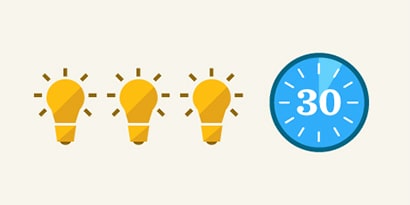
In certain situations, you might have a lot of data/inputs to help answer a problem — which could create a problem in itself. Creating an Affinity Diagram with your team is a great way to address this possible dilemma.
Armed with a lot of information and not sure where (or even how) to start? Try creating an Affinity Diagram with your group. Simply find a room with a lot of wall space, identify a moderator, get some writing essentials and you’re off to the races.
-

Identify your focus. What are you trying to solve? Is it an obstacle? A question about your audience? Future goals? Write it down on a Post-it® Big Pad and feature it prominently on the wall.

-

Assemble your group. Actively recruit people from various departments and/or areas of expertise for a wider range of perspectives.
-

It’s time to brainstorm! Have each participant create as many ideas as possible that relate to the area of focus for 30 minutes. Jot down each idea separately on Post-it® Super Sticky Notes.

-

After 30 minutes, stop brainstorming and have each participant put his/her ideas on the wall. Once all ideas are up, encourage the group to read the thoughts on the wall and add more ideas if they’re inspired to do so.
-

Start grouping similar items. Are a handful of notes related? Group them in a separate area of the wall or room for later discussion. Note: this is not the time for discussion — your team is simply identifying like-minded thoughts.
-

Now, have each participant go around and give each of the groups a name. Again, this is not the time for discussion…
-

Vote on the most important groups. Have your moderator point out each grouping and ask participants via a show of hands to share their opinion on which three groups resonate the most. Calculate the number of votes each group receives and:

-

Rank the most important groups by the number of votes they received. Assemble the groupings with the most votes and collect them to share.
-

Have the team discuss the outcome. Ask the team whether or not some groups are worth combining…if two or more groups are combined, the votes each group received will be combined (and possibly push the group up the ranking scale).
-

Following any additional discussion, the moderator reviews the top three or four ranked groups and identifies these as the top priorities to address the focus topic.
-
Find the products that bring this method to life at post-it.com/collaborate


